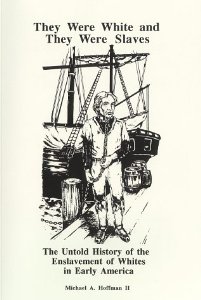Whites Were the First Slaves in America
26SundayMay 2013
Posted in White Slaves
Tags
 The enslavement of Whites extended throughout the American colonies and White slave labor was a crucial factor in the economic development of the colonies. Gradually it developed into a fixed system every bit as rigid and codified as negro slavery was to become. In fact, negro slavery was efficiently established in colonial America because Black slaves were governed, organized and controlled by the structures and organization that were first used to enslave and control Whites. Black slaves were “late corners fitted into a system already developed.” (Ulrich B. Phillips, Life and Labor in the Old South, pp. 25-26).
The enslavement of Whites extended throughout the American colonies and White slave labor was a crucial factor in the economic development of the colonies. Gradually it developed into a fixed system every bit as rigid and codified as negro slavery was to become. In fact, negro slavery was efficiently established in colonial America because Black slaves were governed, organized and controlled by the structures and organization that were first used to enslave and control Whites. Black slaves were “late corners fitted into a system already developed.” (Ulrich B. Phillips, Life and Labor in the Old South, pp. 25-26).
White slavery was the historic base upon which negro slavery was constructed. “…the important structures, labor ideologies and social relations necessary for slavery already had been established within indentured servitude… white servitude… in many ways came remarkably close to the ‘ideal type’ of chattel slavery which later became associated with the African experience” (Hilary McD. Beckles, White Servitude, pp. 6-7 and 71). “The practice developed and tolerated in the kidnapping of Whites laid the foundation for the kidnapping of Negroes.” (Eric Williams, From Columbus to Castro, p. 103).
The official papers of the White slave trade refer to adult White slaves as “freight” and White child slaves were termed “half-freight.” Like any other commodity on the shipping inventories, White human beings were seen strictly in terms of market economics by merchants. The American colonies prospered through the use of White slaves which Virginia planter John Pory delcared in 1619 were “our principall wealth.”
“The white servant, a semi-slave, was more important in the 17th century than even the negro slave, in respect to both numbers and economic significance.” (Marcus W. Jernegan, Laboring and Dependent Classes in Colonial America, p. 45).
Where mainstream history books or films touch on White slavery it is referred to with the deceptively mild-sounding title of “indentured servitude,” the implication being that the enslavement of Whites was not as terrible or all-encompassing as negro “slavery” but constituted instead a more benign bondage, that of “servitude.”
Yet the terms servant and slave were often used interchangeably to refer to people whose status was clearly that of permanent, lifetime enslavement. “An Account of the English Sugar Plantacons” (sic) in the British Museum (Stowe manuscript) written circa 1660-1685, refers to Black and White slaves as “servants”: “…the Colonyes were plentifully supllied with Negro and Christian servants which are the nerves and sinews of a plantacon…” (Christian was a euphemism for White).

.jpg)
No comments:
Post a Comment